About two weeks ago, after Vice President Joe Biden had delivered his recommendations to the president on reducing gun violence, he decided to do something different. Rather than head to television to sell his recommendations to viewers in the typical talking-head format of cable TV, he started a Google+ Hangout -- a live video platform that allows up to 10 people to join a single conversation that can be live streamed to the world.
He was joined in the hangout by four Americans who represented the online community. They pressed Mr. Biden on whether or not his proposed assault weapons ban would be effective, asked him if his mental health funding proposals were sufficient, and even looked up gun violence statistics on FBI.gov in real time to check the facts of the vice president's proposal. The conversation was thoughtful, un-scripted, and raw -- and represents a new type of public dialogue that's taking place on the web today -- a trend President Obama himself will continue this Thursday afternoon when he joins a "Fireside Hangout" to connect with Americans and take questions on his State of the Union, just like he did in 2012.
It will be the fourth time the president has gone straight to the Internet to take questions from citizens after his State of the Union address. While critics of the influence of social media on the public square may bemoan the brevity of tweets, the anonymity of online commenting, or the "lowest-common-denominator" tendencies of the web's multitude of "most-viewed" lists -- done right, online conversations between people and their public officials create a more open and transparent national conversation.
Last year the president went on to the popular online sharing site Reddit for a session of "Ask me Anything." More than 1.8 million readers subscribed to the thread, and were able to vote up which user-submitted questions the president would answer in real time. The result was the surfacing of democratically-elected questions the president may not usually get from reporters. On the other side of the aisle, Senator Chuck Grassley's Twitter account is famous for going straight to citizens with the latest events of his life, from passing legislation to hitting a deer on the highway. You get a much more consistent, personal sense of him in these regular updates that you might otherwise.
Where the Hangouts platform is unique is that it brings together real people in real time in real conversations -- unbounded by the typical barriers (or cloaks) of online dialogue. These people are turning social media into human media. Typically, the digital narrative of a story online unfolds in a series of asynchronous tweets, posts, comments -- or at best, a singular live video stream. These mediums have democratized public dialogue and allowed anyone to have their say -- but everyone is speaking in turn. Compare that to a Hangout, where a group of people can have a live conversation in which anyone can chime in right during the discussion -- creating the same levels of spontaneity, personalization, and collaboration that are usually only possible in face to face conversations. The result is often a more honest and dynamic discussion.
For media organizations, Hangouts are providing a new way to discuss breaking news. While Twitter has provided a great way to break the news in 140 characters, and Facebook creates a great way to start a bounded online conversation in the comments to posts, Hangouts allow a group of reporters or commentators to immediately discuss events as they unfold. When the Supreme Court handed down its decision on President Obama's healthcare law last summer, the New York Times held a Hangout to allow their editorial pages to respond immediately -- a conversation they broadcasted to their homepage. And the Huffington Post's new LIVE venture broadcasts 12 hours of video programming a day, using around 100 Hangouts a week to bring their site to life through video conversations. More than 3,600 people have joined these Hangouts to discuss everything from Kim Kardashian's pregnancy to the fiscal cliff. These media companies that are using Hangouts seem to be creating a new kind of journalism -- where live connections between journalists and viewers shape the stories of our time in a participatory, collaborative way.
People are beginning to experiment with Hangouts technology in fascinating ways. During Hurricane Sandy, we saw hundreds of NJ/NY residents start Hangouts to discuss the storm, pointing their webcams out their windows to give their own live views of the trees whipping around in the backyards under heavy wind and rain. And on Veterans' Day this year, a group called Veterans United started a Hangout on a smartphone from the WWII Memorial in Washington, D.C. and invited dozens of immobile veterans at home to join them in a live tour and discussion.
Just a year into development, we see a bright future for Hangouts. In the same way that YouTube liberated online video for the masses, democratizing content distribution and making citizen reporters of all of us, we see a similar trajectory with Hangouts for live video conversation and coverage of events. It's exciting to watch people innovate on this platform to create new types of public conversation.
Steve Grove leads Community Partnerships at Google+, and was a former journalist at The Boston Globe and ABC News